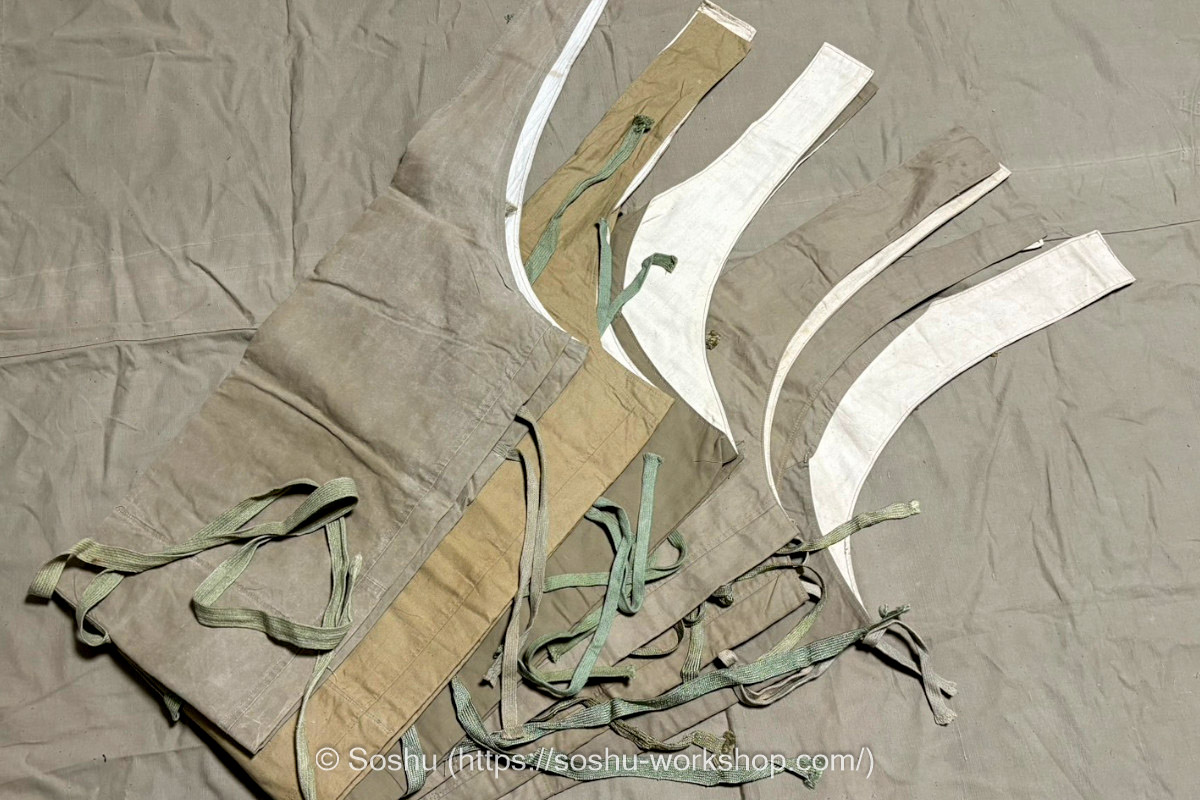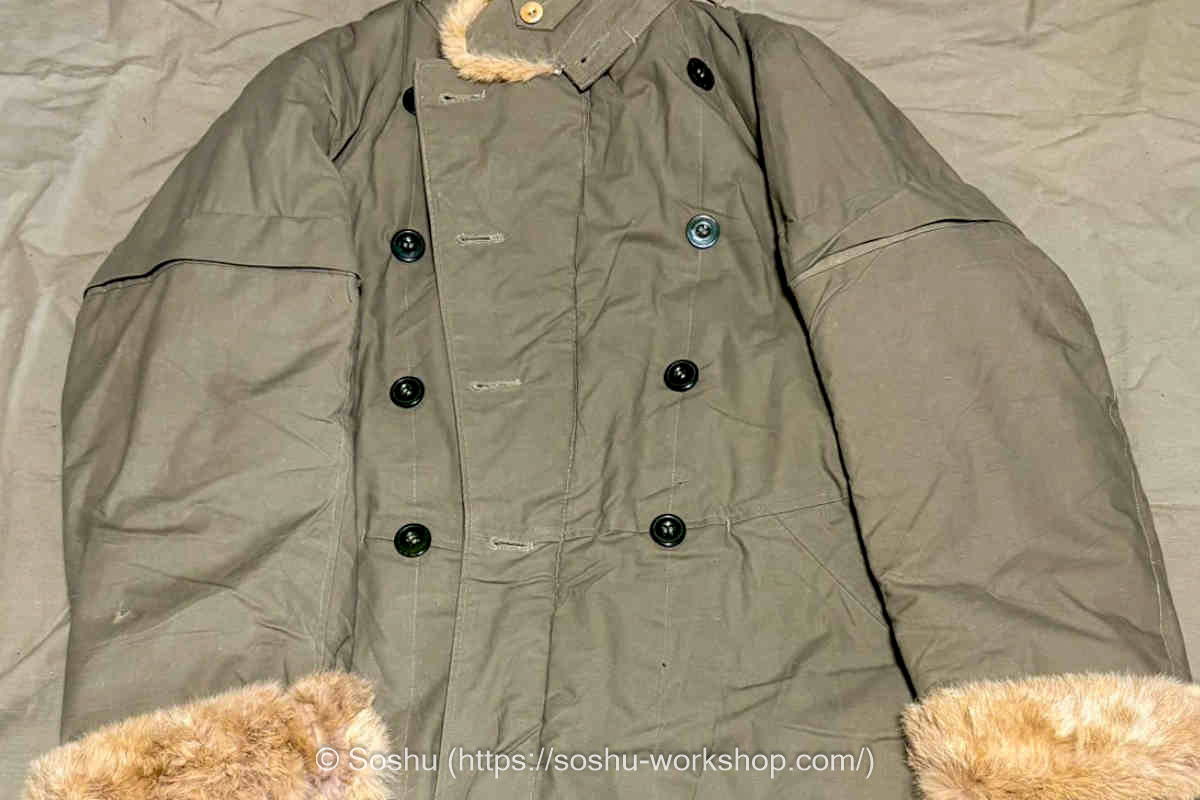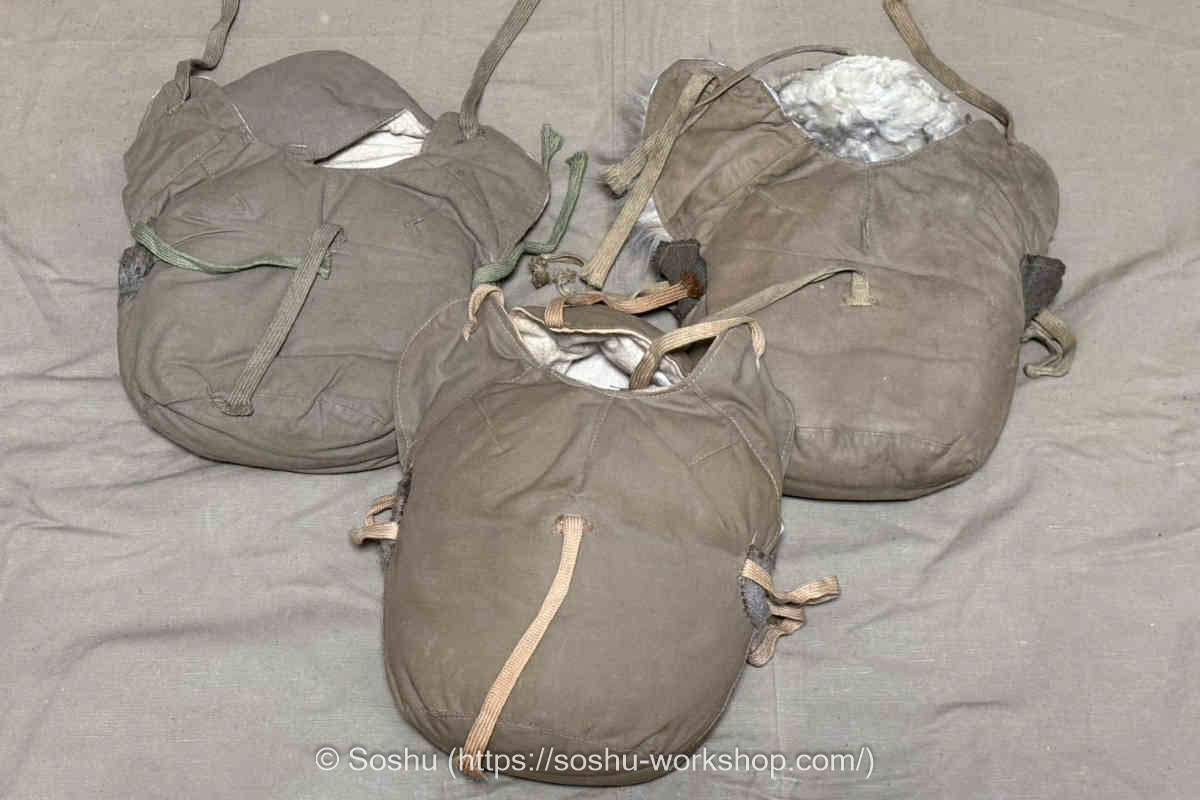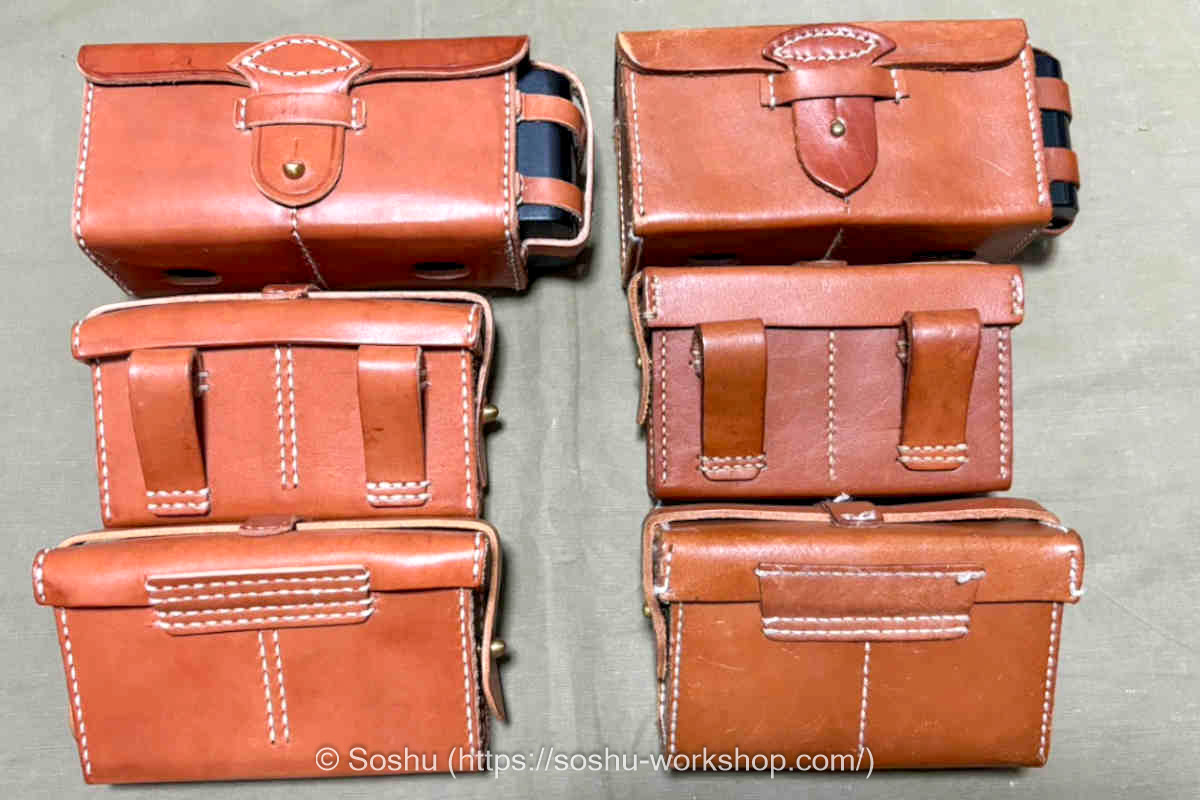Tube Bag
The Tube Bag was standardized in 1919 and was used with almost no changes in shape until the late stages of the Greater East Asia War. This time, I would like to introduce several actual Tube Bags manufactured in the latter half of the war and compare and examine their quality.






